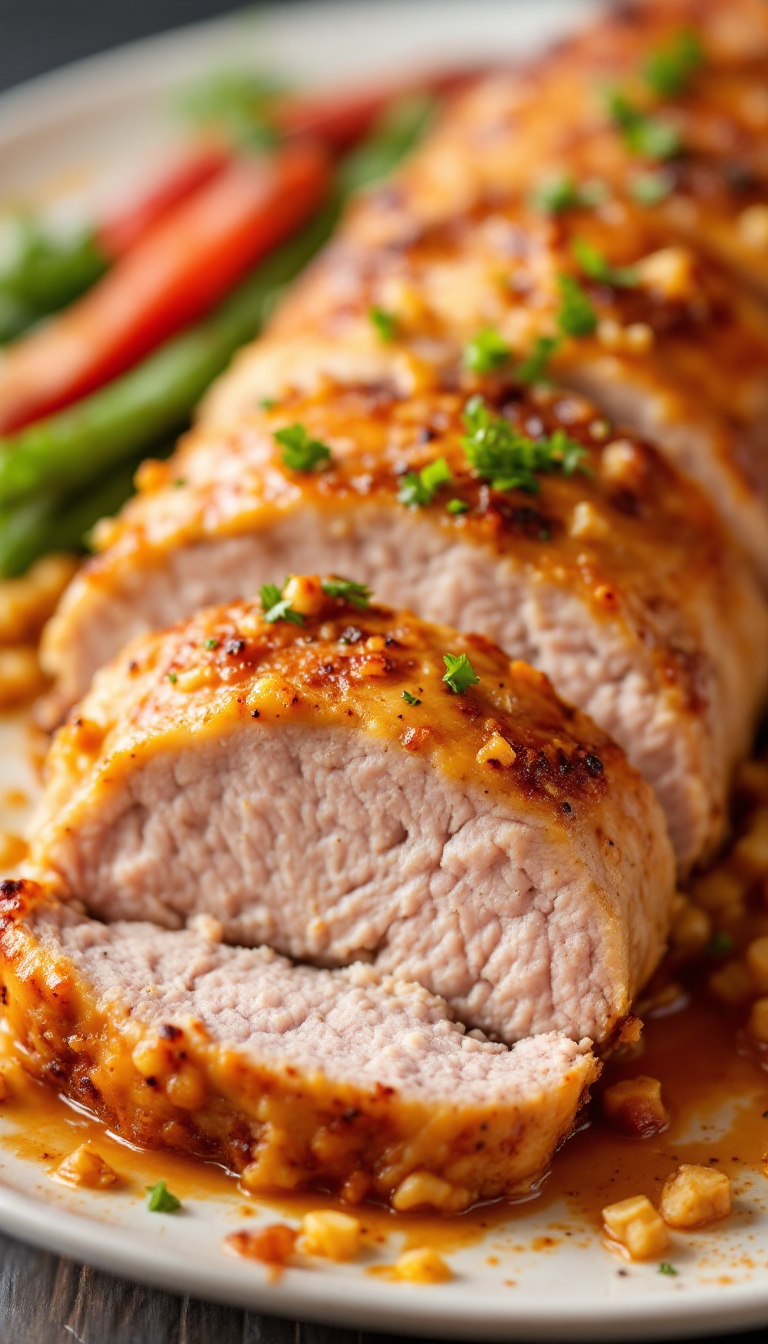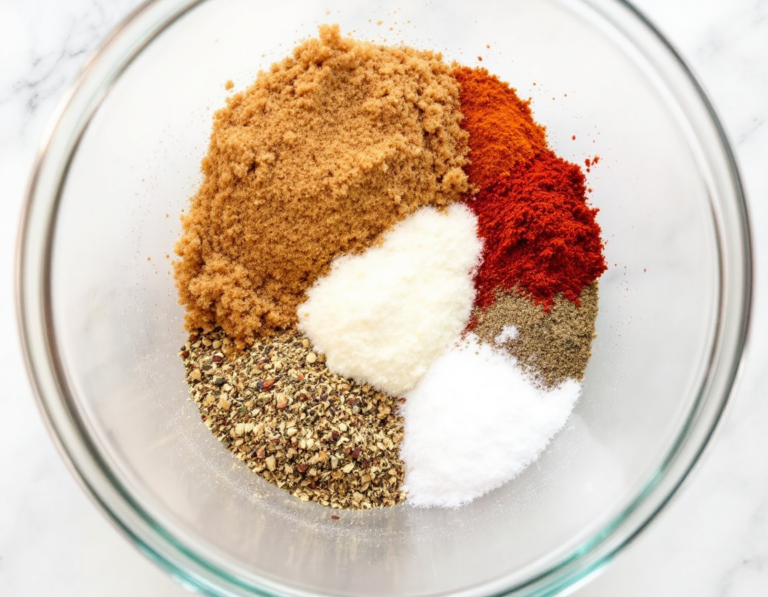
Pork tenderloin is like the unsung hero of weeknight dinners—simple yet sensational. Just think about it: a tender cut of meat, practically begging to be bathed in spices and roasted to juicy perfection. I remember last Tuesday, the aroma alone filled my kitchen, making it feel like a cozy little sanctuary away from the chaotic world outside.
Steps
- Preheat the oven to 400°F and position the rack in the center. Trim any excess fat and the silver skin from the pork tenderloins, then pat them dry with paper towels.
- Combine brown sugar, smoked paprika, garlic powder, onion powder, chili powder, Italian seasoning, salt, and pepper in a small bowl. Thoroughly coat the tenderloins with the spice mixture.
- Arrange the seasoned pork in a 9×13 baking dish and place butter pats on top. Bake the dish uncovered for approximately 25 minutes until the pork’s internal temperature reaches 145°F.
- Allow the pork to rest for 5-10 minutes to ensure it remains juicy. Slice the tenderloins into medallions, pour the pan juices over them, and optionally garnish with chopped parsley.

Ingredients
- Approximately 2 pork tenderloins, about 1 pound each
- 2 tablespoons of brown sugar
- 1 teaspoon of smoked paprika
- 1 teaspoon of garlic powder
- 1 teaspoon of onion powder
- 1 teaspoon of chili powder
- 1 teaspoon of Italian seasoning
- 1 teaspoon of salt
- 1/4 teaspoon of black pepper (or to taste)
- 1/4 cup of unsalted butter, cut into pats
- Chopped parsley (optional, to taste)
Nutritional Values
Calories: 1620kcal | Carbohydrates: 30g | Protein: 192g | Fat: 78g | Saturated Fat: 42g | Polyunsaturated Fat: 6g | Monounsaturated Fat: 24g | Trans Fat: 6g | Cholesterol: 714mg | Sodium: 3204mg | Potassium: 3786mg | Fiber: 6g | Sugar: 24g | Vitamin A: 3054IU | Vitamin C: 6mg | Calcium: 144mg | Iron: 12mg
FAQ
- What is the difference between pork tenderloin and pork loin?
- Pork tenderloin and pork loin are distinct cuts of meat. Pork tenderloin is smaller, extremely lean, and cooks quickly. In contrast, pork loin is larger, contains more fat, and requires a longer cooking time. Due to these differences, they should not be used interchangeably in recipes.
- Why doesn’t this recipe require searing the pork tenderloin before baking?
- Searing does not actually lock in juices, contrary to popular belief. Instead, it can dry out the pork tenderloin. This recipe skips that step to ensure the meat remains juicy and tender by baking it directly in the oven.
- What is the ideal internal temperature for cooked pork tenderloin?
- The ideal internal temperature for pork tenderloin is 145°F. This ensures the pork is safe to eat while remaining juicy and slightly pink in the center, which is perfectly fine with modern farming practices.
- Can I adjust the seasoning in this recipe?
- Yes, the seasoning rub can be customized to suit your taste preferences. If you prefer a spicier dish, feel free to add cayenne pepper or use your favorite pre-made spice blend.
- How should I store and reheat leftover pork tenderloin?
- Leftover pork tenderloin can be stored in an airtight container in the refrigerator for 3-4 days. To reheat, use a small saucepan over low heat or microwave in short increments with a bit of butter to prevent drying out. For longer storage, freeze individual portions for up to 3 months.
Tips
- Avoid overcooking pork tenderloin, as it’s a lean cut and can easily dry out. It’s safe to eat when slightly pink at 145°F, ensuring it remains juicy.
- Use an instant-read thermometer to accurately measure the internal temperature of the pork, especially if using larger tenderloins that may require different cooking times.
- Let the pork rest after baking before slicing to allow the juices to redistribute, ensuring a more flavorful and moist result.
- Feel free to customize the spice rub by adding cayenne pepper for a spicier kick or using your favorite spice blend.
Equipment
- 9×13 Baking Dish – A versatile size for various recipes, including this pork tenderloin.
- Instant Read Thermometer with Probe – Useful for ensuring the pork is cooked to the perfect temperature without overcooking.
- Spice Rub Mixing Bowl – A small bowl dedicated to mixing spices can be handy if you don’t have one at home.